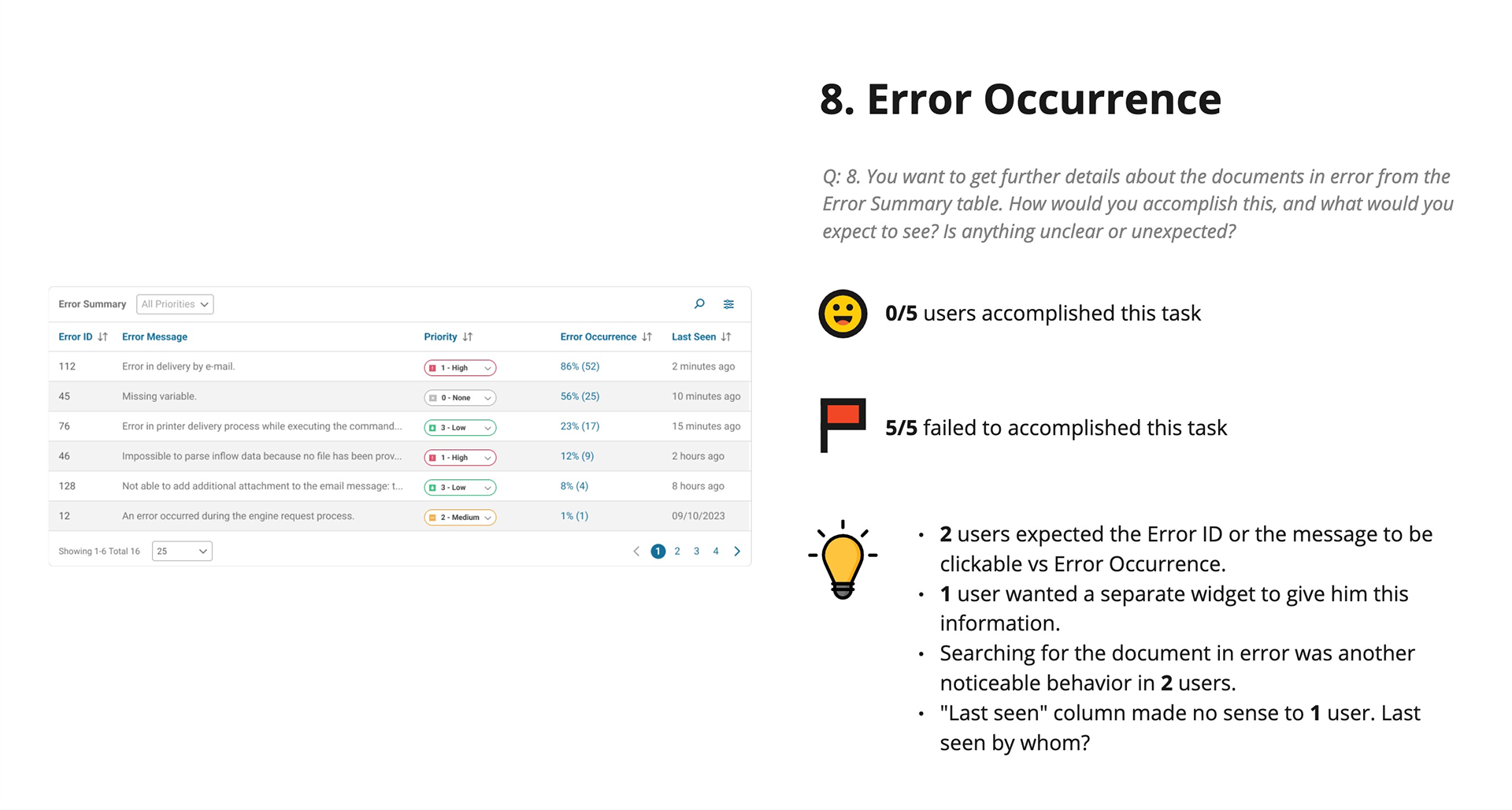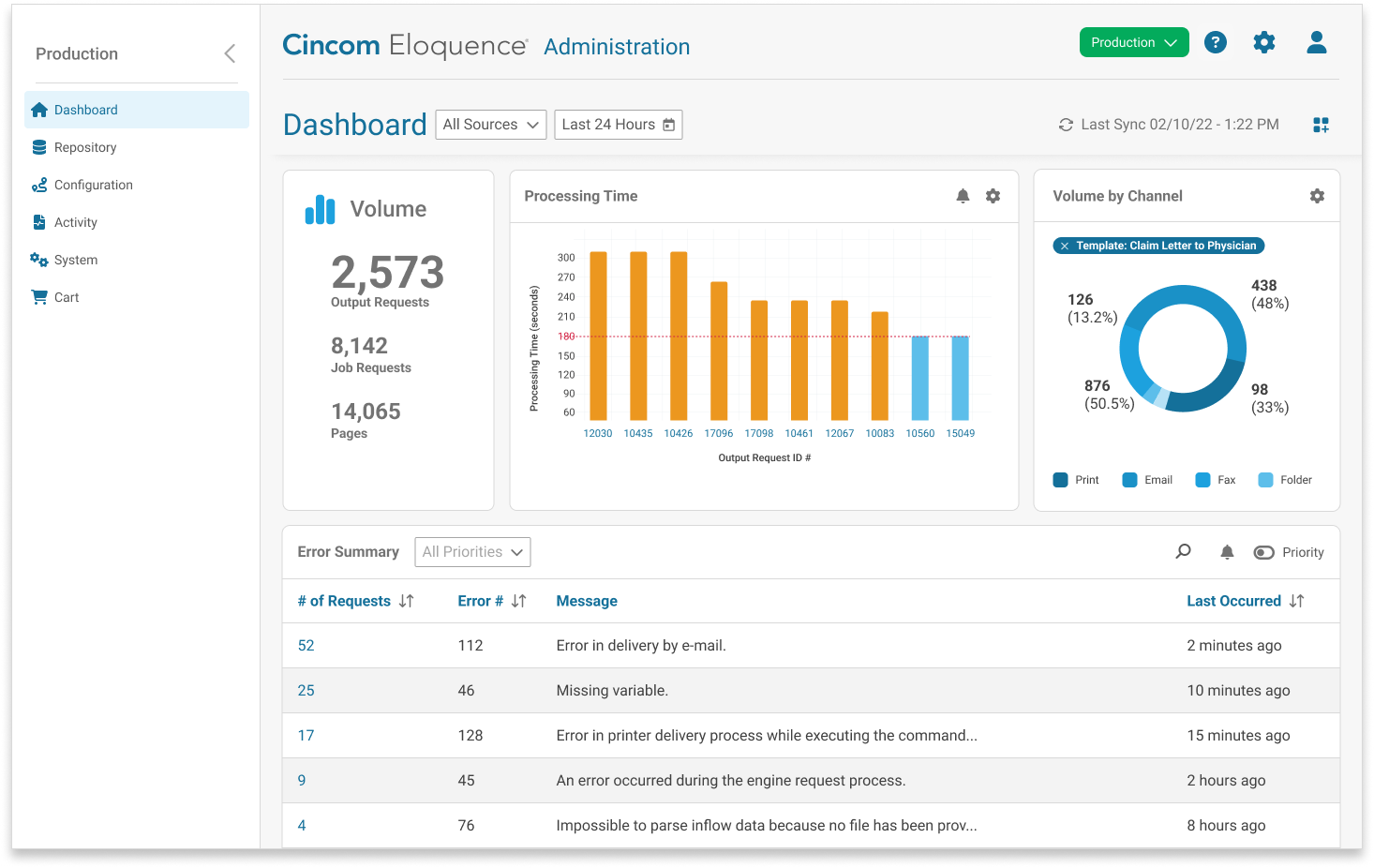A dashboard and improved data tables that help technical users quickly monitor system health, spot errors, and troubleshoot communication issues - turning a complex process into an efficient, insight-driven experience
My Role
Lead UX designer collaborating with 1-2 interns
Led user interviews, card sorts, and co-design sessions
Conducted unmoderated usability tests
Mentored interns on research planning and best practices
Focusing Our Design Efforts
We focused on the application admin experience in response to frequent enhancement requests and feedback from sales cycles. Admin workflows were consistently cited as complex and time-consuming, signaling a clear need for deeper UX research to guide meaningful improvements.
Persona
Eloquence administrators are technical users who configure communication channels, monitor generated communications, troubleshoot errors, and manage permissions and end-users
Identifying User Pain Points
We conducted interviews with users from 7 different customers to observe their workflows and learn more about their challenges.
KEY FINDINGS
3/8 users felt delivery channels are difficult to configure because the workflow is unclear
7/8 users said it's difficult to troubleshoot communication errors because the source may be buried and they get lost in the breadcrumbs
5/8 users mentioned there's no way to know if the system has thrown an error, unless you manually check or build a custom notification tool
Prioritizing the Issues
The UX and product teams prioritized opportunities using three criteria: frequency, value, and feasibility. Improving the error-checking workflow for admins rose to the top. Admins check for errors every day - a high-touch, high-friction task. By streamlining this process, we could reduce frustration and save time across customer operations.
We prioritized this as a high-impact initiative benefiting both users and the business, with robust alerts and reporting planned for a future phase.
UX Analysis of the Experience
An in-depth usability review revealed how complex the EAC application had become. While its flexible delivery channel setup empowered users, it also made everyday tasks cumbersome.
KEY FINDINGS
Data tables lacked basic functionality such as search, sort, filter, and sticky headers, creating unnecessary friction.
Users had to drill deep into navigation paths to locate communication errors, slowing down daily workflows.
Several customers built their own dashboards to surface errors and monitor key metrics, highlighting a clear unmet need.
Identifying Solutions
By surfacing errors directly and introducing built-in dashboard functionality, we could significantly improve efficiency and reduce user frustration - a technically feasible enhancement with strong business value. We also planned to implement best-practice data table functionality to improve usability.
Co-designing with users
With additional user interviews, our goal was to understand which production metrics admins track and how they measure success in the application. Users participated in a card-sorting activity to prioritize dashboard widgets and interacted with a clickable prototype to provide feedback on functionality.
Usability Testing
Users who matched our target persona performed tasks with our prototype, and we used their insights to refine our designs.




Iterating
Throughout our research process, we leveraged our design system to iterate on the dashboard design, progressing from low to high fidelity screens.
We also modernized data tables in the application, with improved functionality and a more readable, modern interface.
We also modernized data tables in the application, with improved functionality and a more readable, modern interface.




Reflection
From the start, we wanted a dashboard that provided real value - not just visual appeal. With a wide range of customers and business needs, flexibility was key. For the first release, we focused on delivering essential, high-value metrics out of the box while enabling analytics for future customization. This approach balanced immediate business impact with a scalable foundation for advanced capabilities in later releases.

